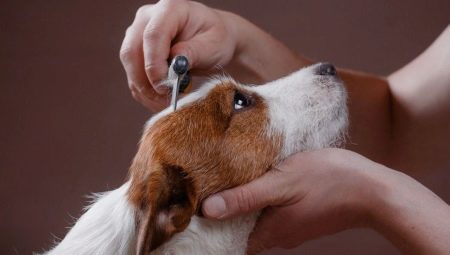Shedding in dogs is a natural physiological process that usually continues in the fall and spring. In winter and summer, wool hardly falls out. At the same time, the owners negatively perceive the annual periods of molting in dogs, when the wool covers the furniture, floor and clothes. To make the process of hair loss faster, you can increase the frequency of bathing the dog and comb out your pet daily. But if molting appeared in winter or summer, it is worth checking the animal for the presence of diseases.
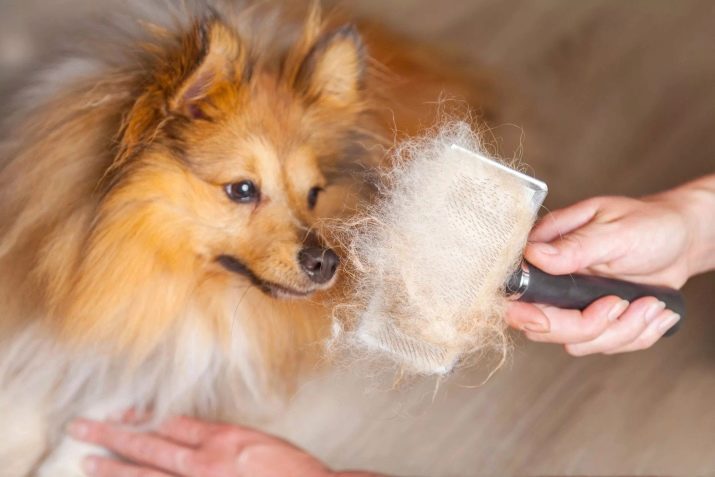
When does molting happen?
The first molt in puppies begins at the age of 6-7 months. Moreover, in females, fur dropping can be observed at 3 months. This is a natural process during which the puppy gets rid of soft fluff and becomes covered with adult hair. Its color may differ from the original color of the young dog. The structure of the coat becomes stiffer and denser, an undercoat appears.
In the future, the dog will molt 2 times a year in the autumn and spring. In the first case, the pet's body begins to prepare for the upcoming winter. In place of the old wool, a thick undercoat grows, which will retain body heat during frosts. With the onset of spring, the animal sheds excess hair.
The least wool falls in winter. At this time, the physical activity of the pet is reduced. Animals instinctively save nutrient reserves, so their body does not spend extra energy on the formation of new wool.
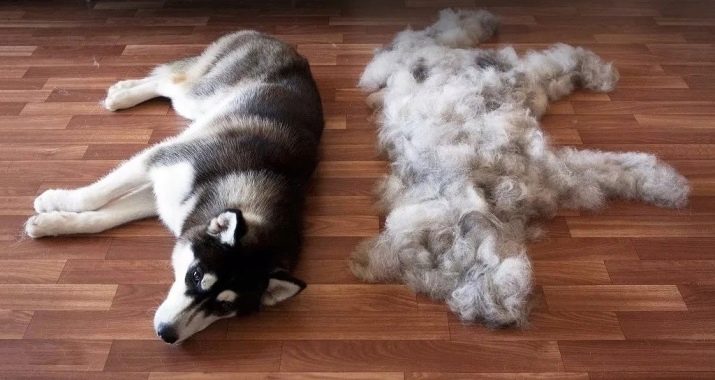
If molting causes a person inconvenience, then he should purchase a short-haired, medium-haired or bald dog. Animals from these breeds practically do not lose wool.Such pets are suitable for people prone to the development of allergic reactions. Breeds with a short molting period or its absence include:
- Shih Tzu
- different types of poodles;
- Hairless dogs: Xoloitzcuintle, Chinese Crested, American Hairless Terrier, Peruvian Hairless Dog;
- Basenji
- Maltese;
- water spaniel.
Due to the lack of hair, dogs are not only not susceptible to molting, but also do not have a specific smell.
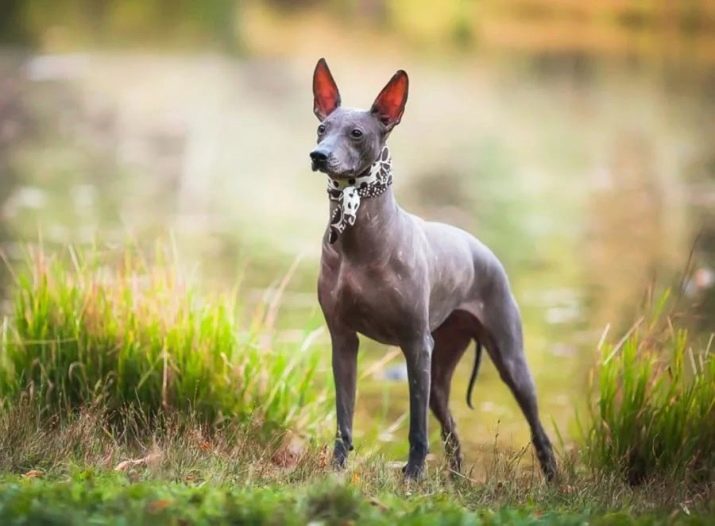

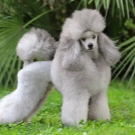
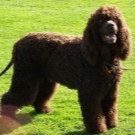


How long does it take?
As part of the physiological norm, molting in dogs takes place 2 times a year for 2-3 weeks. If the pet lives at home, then dropping old wool can cause a lot of inconvenience to the owners of the animal. If the apartment has good heating and regular nutrition, daily loss of wool in small quantities is possible. This is due to favorable living conditions: the dog gets used to living in warmth and the constant receipt of nutrients. Therefore, she does not need to lose a lot of wool in spring and autumn.
In rare cases, a dog can shed all year round. Every few days she has a lot of hair. The following factors can serve as the reason for this phenomenon:
- violations of the endocrine system, as a result of which a hormonal imbalance appears in the animal’s body;
- the presence of parasites: pinworms, roundworm, helminths;
- dermatitis;
- disorders of the gastrointestinal tract, in which the dog does not receive enough nutrients;
- stress;
- low humidity in the room where the animal lives;
- high ambient temperature.
To prevent hair loss, it is necessary to fight diseases with the help of drugs and diet therapy. Before buying medicines, you should show the pet to the veterinarian so that he makes a diagnosis and helps with the choice of medicines.
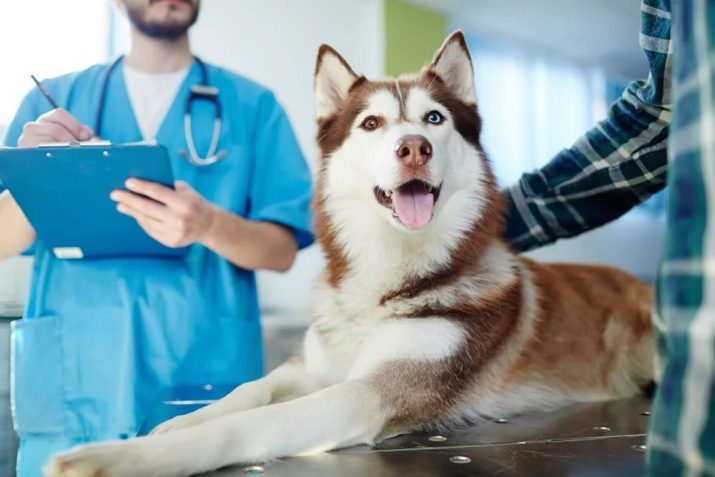
Why does the dog molt in winter?
Normally, dogs should not fall out with the onset of cold weather. Premature molting in the winter season can be a symptom of a disease. If in February the owner of the animal noticed that the dog began to molt, he should analyze the behavior of the dog in the previous month and observe the pet throughout the day. Often a symptom of a pathological process can be decreased physical activity and lack of appetite.
In the absence of signs of illness, it is recommended that the dog bathe in the street in clear snow. This will help get rid of excess hair.
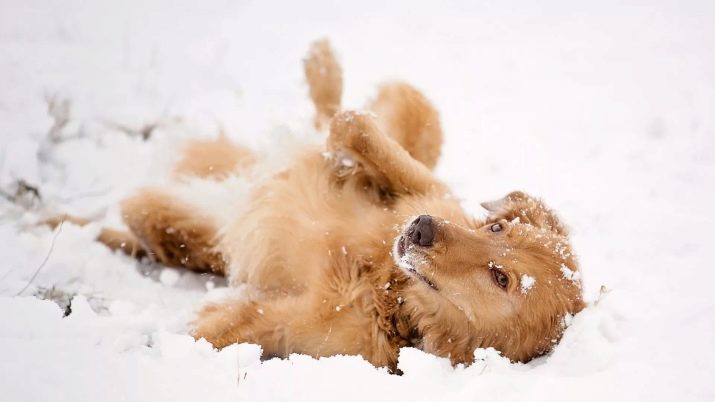
There are the following reasons for the appearance of early winter molting.
- Dermatitis. To identify the disease, it is necessary to examine the skin of the animal. With dermatitis, red spots appear on the skin. To get rid of the pathological process, you need to seek help from a veterinarian. The specialist will prescribe the appropriate drugs.
- Allergic reaction. Loss of wool is observed with individual intolerance to feed, shampoos, household chemicals. A negative reaction of the immune system can be caused by dust or pollen. Often, allergies in dogs provoke salt, which is sprinkled with icy asphalt. In addition to alopecia, bleeding wounds and ulcers with an unpleasant odor will be visible on the dog’s legs. In such a situation, it is necessary to change the route of walks, avoiding sites with salt, and begin treatment of wounded paws to prevent the occurrence of infection.
- Hypovitaminosis, nutritional deficiency. Alopecia may be due to a lack of beta-carotene, tocopherol, omega-3 and omega-6 polyunsaturated fatty acids. Deficiency of these substances worsens the condition of the hair and hair follicles. Winter molting that occurs against the background of hypovitaminosis can be caused by constant feeding of the dog with dry food.
- Parasitic infestation. Fleas and lice can appear even in winter. To exclude the presence of parasites in the dog, it is necessary to carefully examine its coat.Typically, insect colonies form behind the ears, on the stomach, in the armpits, and on the inside of the thighs. In addition to adults, larvae and redness of the skin after a bite can be found on the pet’s body.
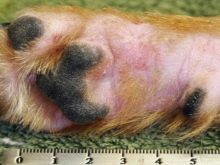
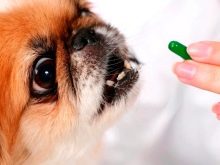
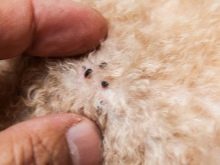
Many people ask what to do to prevent winter molting. First you need to find out the cause of hair loss on your own or with the help of a veterinarian.
You can get rid of winter molting in dogs in the following ways.
- Determination of the cause. It will be necessary to examine the skin of the dog for the presence of allergic dermatitis, parasites and their larvae. If fleas or lice are found, the dog needs to undergo anthelmintic therapy. Often blood-sucking insects are carriers of worm eggs. If there is no damage to the skin and coat, a blood test must be taken to rule out infections and hypovitaminosis.
- Compliance with diet, intake of vitamins. You must purchase premium dry food for your dog. Vitamins can be dissolved in a bowl with water or mixed with animal food. It is recommended to transfer the dog from dry food to natural products.
- Normalization of room temperature. Winter molting may begin due to excessive heating of the apartment. If the hair falls out for this reason, it is not recommended to bring the dog out into the street. Walking in the cold can cause a cold in dogs. It is better to leave your pet in the apartment until spring.
- Providing peace. During molting, you can not shout at the dog, introduce the animal to new pets and people.
If the reason for molting is not excessive heating at home, you can take the animal for a walk 2-3 times a day for half an hour. A long stay on the street increases the physical activity of dogs, which positively affects the metabolic rate.
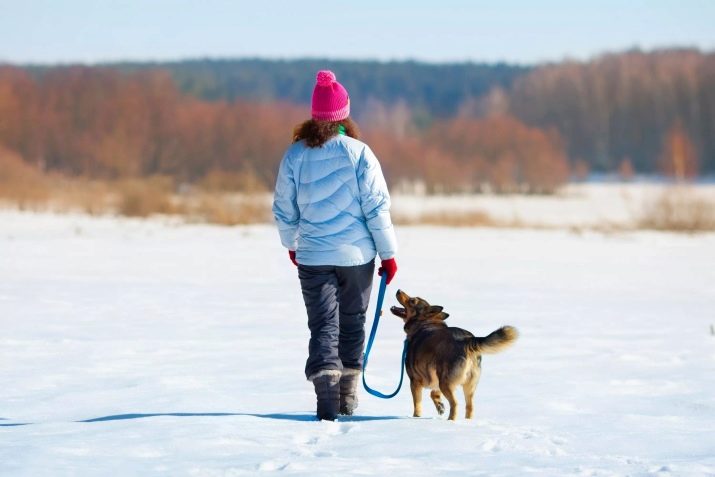
How to speed up and reduce hair loss?
During the period of natural molting, it is impossible to stop hair loss. At the same time, the physiological process can be accelerated, due to which the hairline of the pet will recover much faster. To get rid of molting in a short time, you can resort to the following measures to combat alopecia.
- Avoid overheating. To do this, it is necessary to adjust the temperature in the room, to exclude walks in direct sunlight.
- Comb out excess hair 2-3 times a day. Timely disposal of fallen fur will prevent its spread throughout the apartment. The comb should be bought at pet stores. When choosing a product, you need to consider the type of pet hair. Shorthair dogs should be additionally wiped with a hard towel to remove excess hair remaining after combing.
- Balanced pet feeding. The dog spends all its internal energy reserves on the formation of new hair, hair follicles are intensely supplied with blood. Therefore, vitamin therapy and the right diet will help the animal quickly get rid of the old hairline and build up updated hair.
- It is recommended that you give your dog foods containing omega-3 and omega-6 fatty acids: fish oil or vegetable oil. For 5 kg of body weight should be 1 tsp. funds. Weekly it is worth feeding your pet seafood or fillet of sea fish.
- Bathing. To more effectively deal with alopecia, you can make a warm bath for your pet. The animal should be washed using a special tool - protein shampoo. Proteins in the product will cause renewal of hair and skin. After swimming, it is necessary to wrap the animal in a towel for 2 hours, and then comb it thoroughly.
- Express molt. You can go through the procedure in a special salon or conduct it yourself at home. To speed up molting, you will need to buy a special mask. After bathing with this product, the animal’s hair is covered, covered with a film on top, creating a greenhouse effect, wrapped in a blanket or towel for an hour.The skin pores expand, so 90% of the old coat begins to fall out. After the procedure, it is necessary to wash off the mask in warm water and dry the dog with a hairdryer.
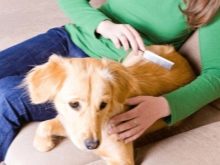
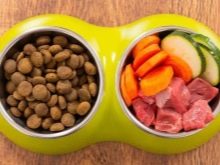
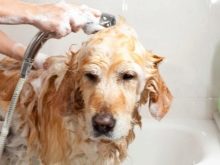
At the same time, such measures to accelerate shedding do not work with prolonged and unnatural hair loss. If the dog begins to intensively shed hair, this indicates the development of a pathological process or age-related changes in the body of the dog. If the owner has noticed that the molting lasts longer than usual and the dog becomes lethargic, he should contact the veterinarian for analysis. In most cases, pathological hair loss occurs in the following cases:
- violation of the water-electrolyte balance, dehydration;
- unbalanced diet;
- hormonal imbalance;
- parasitic infestation;
- impaired immune system;
- hepatitis;
- damage to the gastrointestinal tract;
- renal and liver failure;
- severe stress, emotional upheaval;
- allergy.
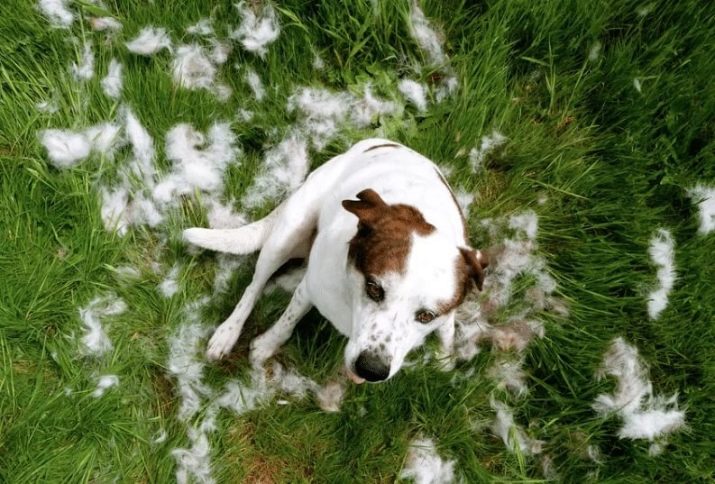
With the development of molting against the background of any disease, it is necessary to provide it with nutrients. You can buy ready-made feeds, vitamin-mineral complexes or preparations in zoo pharmacies or prepare food for your pet yourself. Eating natural foods more effectively helps the dog cope with prolonged hair loss. At the same time, this method hits the owner’s wallet and requires strict control over the content of vitamins in the food, which are responsible for the condition of the coat.
Before adjusting the diet, you should familiarize yourself with the nutrients that the dog needs during molting.
- Vitamin A. Retinol is responsible for the production of elastin, collagen and keratin fibers. With its deficiency, brittle hairline increases, the hair begins to fade.
- Vitamin Group B. Responsible for the condition of the sebaceous and sweat glands. In case of violation of the production of sebum, the condition of the skin improves, peeling and itching develops. A progressive pathology can develop into dermatitis.
- Vitamin C. Ascorbic acid is not only responsible for immunity. The nutrient compound improves blood circulation to the soft tissues, including the hair follicles in the subcutaneous fat. Due to the enhanced microcirculation, the hair follicles receive a sufficient amount of oxygen and energy, which helps to speed up the shedding process.
- Omega-3 and omega-6 fatty acids. They shorten the renewal of the hair, improve the structure of the coat. With regular intake of fatty acids, the animal’s fur becomes soft, begins to shine.
- Mineral components. Manganese and copper are responsible for the formation of new wool. Sulfur prevents the development of hyperkeratosis, the appearance of dandruff, normalizes the sebaceous glands. Phosphorus and calcium return wool shine and silkiness.
Among the finished vitamin complexes, the brands Yumega Boost, Safari Skin and Coat and Vits Can are considered the most effective. Before giving the animal a drug, you should consult your veterinarian.
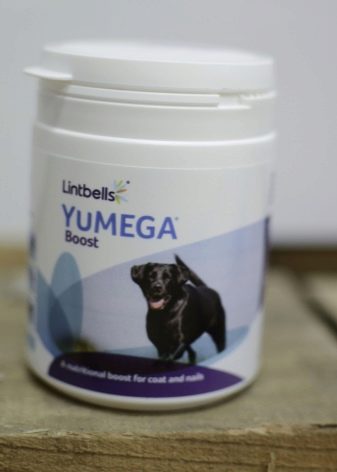
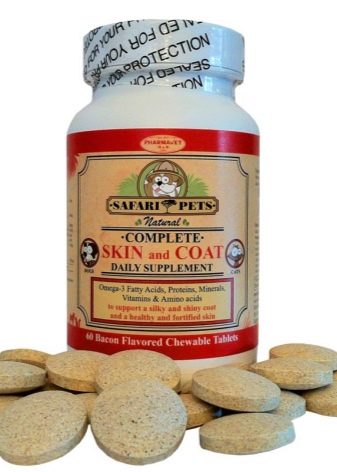
Prevention
To prevent prolonged molting in dogs, the following preventive measures must be followed.
- Routine veterinary examination. A visit to a specialist will help in time to prevent the development of a pathology that could cause premature molting.
- Regular hair combing after bathing.
- Self-examination of the animal 1-2 times a month. It is worth checking the coat for parasites, examining the skin for allergies. The onset of the disease can be reported by the deterioration of the gums and teeth.
- Stress elimination. Emotional stress negatively affects the health of the animal.
- Providing essential vitamins. A regular balanced diet activates metabolic processes, strengthens the immune system and improves the condition of the hairline.
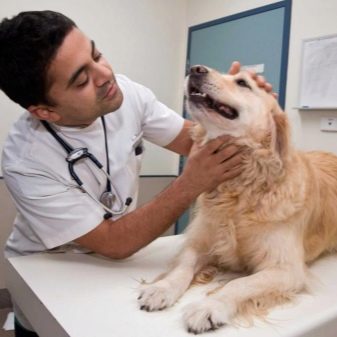
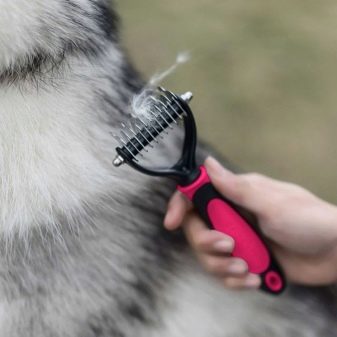
At the same time, the most effective measures for protecting a pet are constant care and care.It is worth walking the dog daily, preventing its overheating or hypothermia. Walking with the owner in the fresh air restores the psycho-emotional state of the animal, increases its physical activity.
You will learn about which dog breeds do not molt from the video below.
